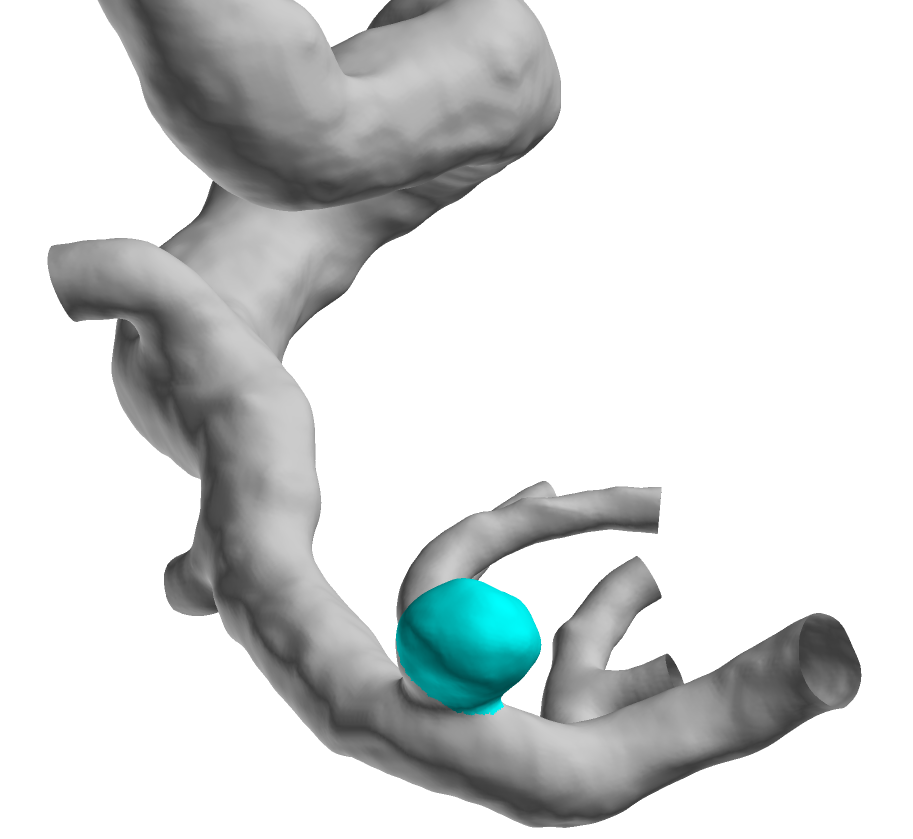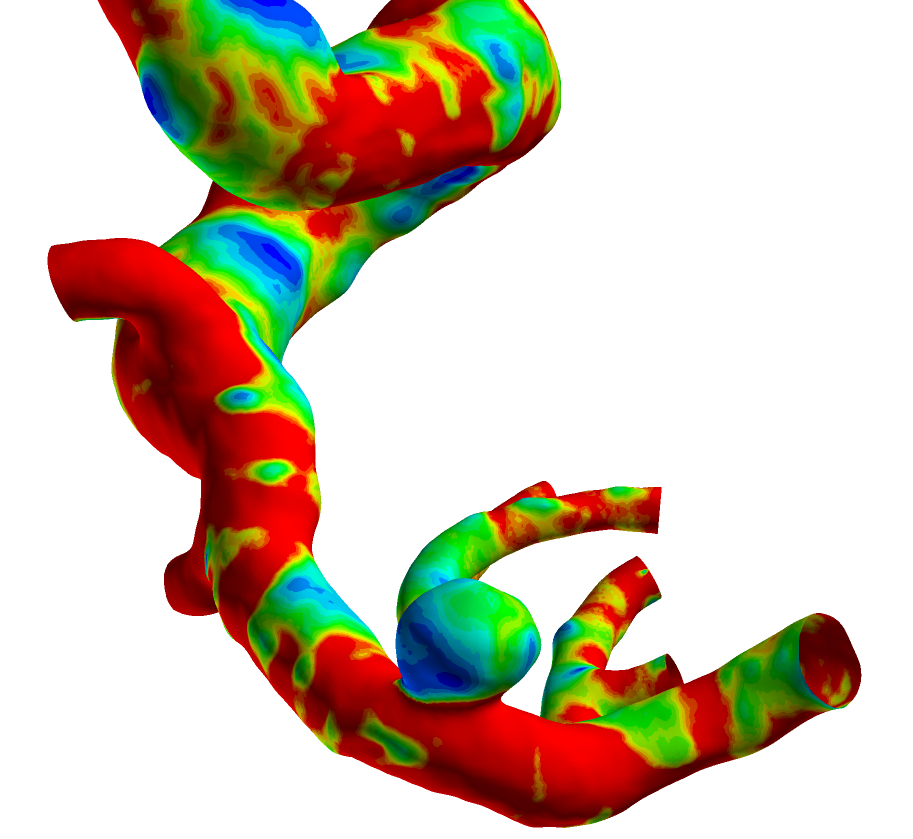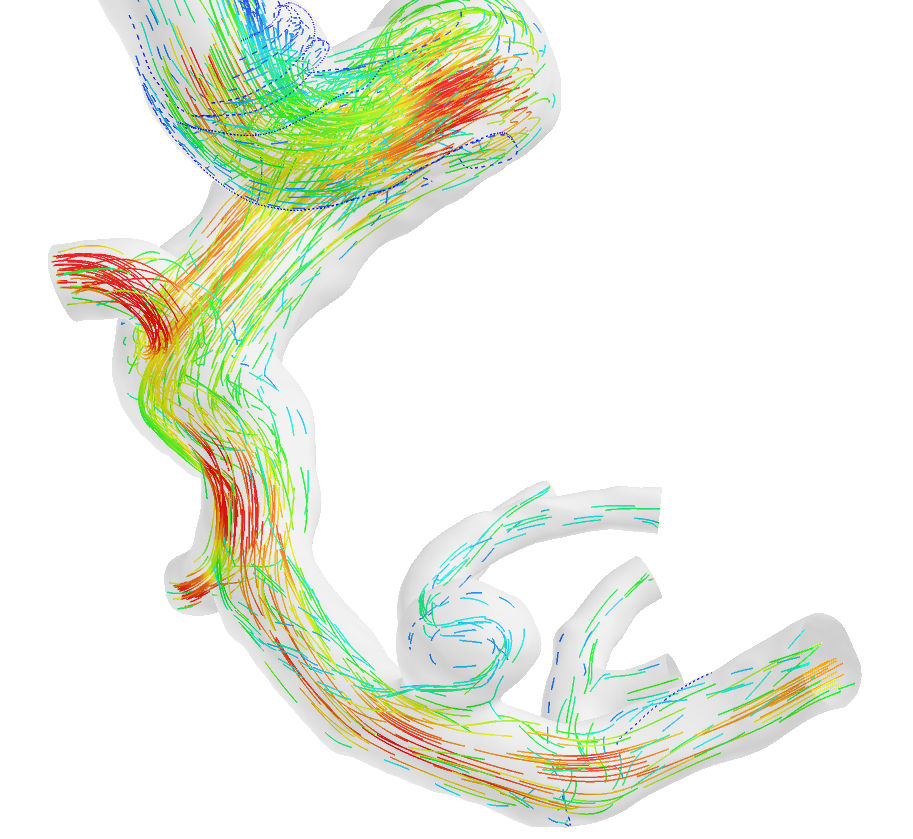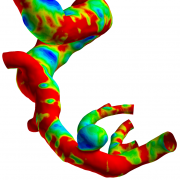CFD in medicine: How flow calculations can help patients with cerebral aneurysms.
A cerebral aneurysm is a sack-like bulge of the vascular wall of a brain artery. According to the German Stroke Foundation (DSG), about 1.5 million people in Germany live with a brain aneurysm. In most people, the aneurysm remains undetected for the rest of their lives. Aneurysms can remain completely inconspicuous, but can also cause life-threatening bleeding in the brain (subarachnoid hemorrhage, a special form of stroke).

Even their treatment is not without risk. Here there are two common procedures in which the aneurysm is closed: Neurosurgical, during a small cranial opening using a clamp (“clipping”) or neuroradiological, by advancing a metal spiral using a microcatheter over the inguinal artery to the aneurysm (“coiling”).
And CFD?
It is known that on thin-walled (“vulnerable”) aneurysm regions there is an increased risk of rupture. The correlation between vessel wall thickness and the flow properties of the blood flow is the subject of intensive medical research and empirically proven.

CFD flow simulations can be used to display flow parameters such as wall shear stresses. With the help of this informations and the formation of scores, conclusions can be drawn about thin-walled areas of the aneurysm with an increased risk of rupture.
CFD supports you with questions like:
- Are you going to have surgery or are you waiting? What is the risk of a rupture during an operation? What is the risk of non-treatment?
- Clipping or coiling? Which surgical method should be used for the operation?
- How should the operation be proceeded? The back of the aneurysm is not visible during surgery. Flow calculations, however, provide information at every point of the vessel.

Currently, the team of the CFD Consultants GmbH, together with the with partners from industry and academia, is involved in a research project to develop a CFD-based method for the detection of cerebral vulnerable aneurysm regions.
The aim of the research project is to develop an independent program with a fully automated workflow whose application in aneurysm treatment will become part of clinical routine and can be used in emergency medicine.
Contact: Klaus-Peter Helbig, CFD Consultants GmbH


